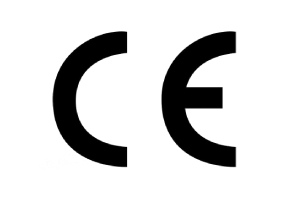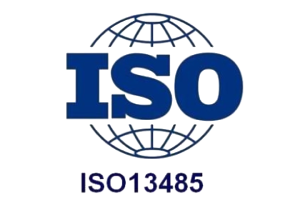A nossa linha de produtos de Regeneração Óssea Guiada (GBR) oferece um conjunto abrangente de ferramentas avançadas concebidas para facilitar a regeneração e reparação do tecido ósseo. Esta série inclui ferramentas essenciais, tais como malhas de titânio dentárias, parafusos de osso, parafusos de tenda e kits de elevação do seio maxilar, que satisfazem várias necessidades de regeneração óssea.
As malhas de titânio dentário fornecem suporte no local do enxerto ósseo, enquanto os parafusos de osso são utilizados para fixar o material de enxerto, ajudando a formar uma estrutura óssea estável e a promover a integração e a cicatrização. Todos estes instrumentos GBR são meticulosamente concebidos e rigorosamente testados para garantir os melhores resultados e fiabilidade nos processos de regeneração e reparação óssea.
Nestes casos de cirurgia GBR (Regeneração Óssea Guiada), foi utilizada uma malha de titânio DentalMaster de alta qualidade como membrana de barreira para facilitar a regeneração óssea nas áreas afectadas. A malha foi fixada de forma segura com pinos de membrana para garantir a estabilidade e manter o espaço de regeneração. Foram utilizados parafusos ósseos para fixar o material de enxerto no local, promovendo a proliferação celular e apoiando a cicatrização óssea. Foram utilizados instrumentos dentários avançados, incluindo facas de enxerto ósseo, pinças de membrana e brocas, para efetuar os procedimentos com precisão, garantindo segurança e exatidão. Estas ferramentas e técnicas dentárias fiáveis restauraram com êxito as estruturas ósseas dos pacientes, preparando os locais para a futura colocação de implantes dentários. Cada caso realça a importância de um planeamento cirúrgico adequado e da utilização de instrumentos dentários de topo para alcançar os melhores resultados.



Os nossos produtos dentários cumprem rigorosas normas regulamentares de qualidade, e estamos empenhados na aprendizagem e melhoria contínuas para garantir que tanto o cliente como os seus pacientes dentários possam receber os produtos e serviços da mais alta qualidade e mais profissionais disponíveis no mercado.

Certificação CE (clique para ver)

Certificação ISO13485 (clique para ver)

Sistema de implantes dentários DENTALMASTER SLA_Aprovação do produto_Indonésia Exp. 12102025 (clique para ver)

Licença do produto 67-2-2-2-0004127_DentalMaster Dental Implant System (clique para ver)
Com 16 anos de experiência, a DentalMaster é especializada na conceção e fabrico de instrumentos dentários de alta qualidade. Equipada com tecnologia avançada, como maquinagem CNC e ferramentas de inspeção de precisão, fornecemos soluções fiáveis e adaptadas às suas necessidades.
Os nossos serviços personalizáveis, a gestão rigorosa da qualidade e as colaborações com especialistas dentários de renome garantem ferramentas inovadoras e fiáveis para procedimentos de rotina e complexos. Escolha a DentalMaster para uma qualidade em que pode confiar.

A ROG em medicina dentária refere-se à técnica de Regeneração Óssea Guiada, que é um método cirúrgico que utiliza biomateriais e tecnologia para colocar uma membrana de barreira na área do defeito ósseo, isolando e protegendo o tecido ósseo recém-formado, ao mesmo tempo que promove a proliferação de osteoblastos e a regeneração do tecido ósseo. Esta técnica é utilizada principalmente no tratamento da doença periodontal, na reparação de defeitos ósseos alveolares e no tratamento de defeitos ósseos em redor de implantes dentários. Ajuda a restaurar a estrutura de suporte dos dentes e melhora a função oral.
O tempo de tratamento da Regeneração Óssea Guiada (ROG) é um processo complexo influenciado por vários factores, incluindo a gravidade do defeito ósseo, as propriedades dos materiais utilizados e a taxa de cicatrização individual do doente. Geralmente, desde o início do procedimento até ao ponto em que o novo osso gerado é suficientemente forte para suportar um implante, este processo pode demorar cerca de 3 a 6 meses. Durante esta fase de recuperação, os pacientes devem seguir estritamente as instruções do médico e comparecer às consultas de acompanhamento dentro do horário previsto para garantir que o tratamento progride como esperado e atinge o resultado desejado.

Convidamos os distribuidores, hospitais e clínicas dentárias a juntarem-se a nós na criação de mais sorrisos, alimentados por uma paixão partilhada pelos implantes dentários.
DentalMaster é uma empresa especializada em dentisteria de implantes. Marcas como Nobel Biocare, Short Bicon, Straumann, Zimmer, Megagen, Dentium e Hiossen são marcas registadas das respectivas empresas. A DentalMaster não tem nenhuma afiliação comercial com essas empresas. A menção dessas marcas tem como único objetivo identificar com precisão os implantes, instrumentos, pilares e componentes compatíveis oferecidos pela DentalMaster.
Ligações rápidas
Produtos
Contactar-nos
Copyright © 2024 DentalMaster Dental Instrument Suppliers CE/ISO13485. Todos os direitos reservados.